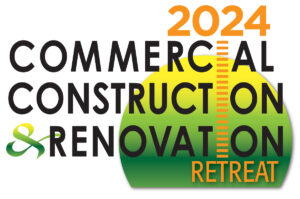 Ranked in the Top 10 US cities to visit in 2019 by Travel + Leisure Magazine, Austin, Texas is home to a fascinating blend of music, art and world-famous BBQ culinary delights. Despite being the capital of Texas, one of the fastest growing cities in the US and home to a major university, Austin somehow manages to retain its small-town feel. The Colorado River winding lazily through the heart of the city, certainly amplifies that overall ambiance, and Barton Springs serves as a well-loved local gathering spot.
Ranked in the Top 10 US cities to visit in 2019 by Travel + Leisure Magazine, Austin, Texas is home to a fascinating blend of music, art and world-famous BBQ culinary delights. Despite being the capital of Texas, one of the fastest growing cities in the US and home to a major university, Austin somehow manages to retain its small-town feel. The Colorado River winding lazily through the heart of the city, certainly amplifies that overall ambiance, and Barton Springs serves as a well-loved local gathering spot.
It’s not only Austin proper that is growing and transforming, of course.
Just 10 miles northwest of downtown Austin, The Omni Barton Creek Resort & Spa is located at the gateway to the picturesque Texas Hill Country, with its rolling hills, limestone bluffs, wide branching oak trees and spring-fed creeks. The resort puts guests far enough from the city to enjoy the peace and quiet of the countryside, and yet keeps them just close enough to enjoy all the attractions that make Austin great.
Originally opened in 1987, the Omni Barton Creek Resort & Spa had been expanded several times over the years, yet it always seemed to remain rather “disconnected” from its beautiful surroundings. Much of this had to do with the design and utilization of the space in both the resort buildings themselves as well as the surrounding countryside. The layout was internally focused and conventional in its design and did nothing to draw in outside influences.
Thanks to a thoughtful and innovative renovation led by The Beck Group, which served as the main architect and construction firm on the project, and Looney & Associates, which led the interior design efforts, the 32-year-old resort now feels brand-new.
Taking inspiration from the landscape of Texas Hill Country, the property’s overall design highlights the history and sweeping views of its location. At every opportunity, the design team enhanced the visitor experience by providing guests with access to the stunning natural beauty of the property. They also selected art and furnishings that bring the outdoors inside.
Key elements of the renovation included:
- A new arrival and lobby experience
- A new hotel tower with 180 guest rooms and suites that bring the resort’s total accommodations to 493
- More than 76,000 square feet of meeting and conference facilities, including a new 14,500 SF ballroom
- A new 7,000 square foot outdoor event pavilion with retractable walls
- Two new outdoor event lawns
- Seven new dining outlets offering a wide range of cuisines and atmospheres
- A brand new Mokara Spa with a private, adults-only rooftop pool and spa cuisine from the Spa Creek Café
- An expansive, multi-tiered pool-scape with an infinity-edge pool offering sweeping Texas Hill Country views
- A redesigned tennis complex featuring 10 courts with LED lighting for evening play
The team utilized multiple design strategies to transform a tired property that required extensive deferred maintenance into a next generation must-visit golf and spa resort destination.
Defining the ‘Heart of the Resort’
Due to ad hoc additions over the years, the complex had a challenging, circuitous internal layout that left the resort without a definable center or distinctive “sense of place.” Guests arrived, checked in and were guided to their rooms without ever enjoying a single glimpse of the lush landscape or the top-ranked golf courses that surround the resort. From a visitor experience standpoint, the layout did not offer an intuitive central gathering space.
The design team’s first priority was to define the “Heart of the Resort” by understanding how the existing assets, including roughly 300 guest rooms, a ballroom and outdated meeting rooms, could be integrated into a larger cohesive complex that felt as if it was all built at the same time. This process was not without its challenges.
Identifying the correct placement of the lobby to connect the large, irregularly laid out resort was perhaps the most challenging aspect of the renovation. Early on, designers seriously explored placing the lobby in the base of the new guest room tower. This solution would have created a grander, more transparent arrival sequence that would have resolved the issue of the current lobby, which had very low ceilings and offered no views to the outside.
The designers understood that the connecting program areas and amenity spaces needed to provide spaces that were more human in scale.
This solution ultimately was discarded because the “Heart of the Resort” would have been moved so far into the new section that it would not feel connected to the existing spaces. Taking inspiration from classic Hill Country home living rooms, designers instead gutted the existing lobby and opened it up with floor-to-ceiling windows, adding a new wrap-around porch that showcases stellar views of the region’s unrivaled landscape. A fireplace separating the check-in experience from the “living room” of the lobby adds to the cozy, inviting atmosphere that makes the “Heart of the Resort” feel like a second home.
Once the lobby location had been determined, the design team began identifying core building functions by type—including reception areas, gathering spaces, restaurants and conference facilities—and grouping these elements to support spatial and visual adjacencies.
For example, the lobby bar offers a hub of activity and serves as a natural gathering space. This was accomplished by considering two different design strategies—distributing activities equally across the entirety of the space or gathering everything together to create a central space for visitors to group. The team ultimately moved forward with the latter option, making a deliberate effort to create a centralized space that would draw people in.
The rest of the resort experienced similarly detailed and thoughtful design decisions. Instead of having the lobby bar’s sightlines focus internally, for example, the new Jim Bob’s Lobby Lounge overlooks the new Ladybird Event Lawn. Other resort restaurants and terraces with fire pits are within view, encouraging guests to explore other areas of the resort.
 Connecting with nature
Connecting with nature
Connecting to the outside and the landscape was a key design driver. One of the design deficits of the resort pre-renovation was that the buildings did not connect with nature. The outdoor spaces were experienced simply as a space where the buildings met the landscape rather than enhancing the visitor experience.
Ensuring that siting the new buildings and configuring adjacencies resulted in a “design payoff” that enhanced the guest experience was at the forefront of the design team’s mind. And for that to happen, the outside needed to be defined. Something needed to happen to create a space worthy of attention and interaction rather than simple observation, and incorporating the landscape into the design was crucial to that.
The design team’s solution reinforced the idea of the “Heart of the Resort” by creating a semi-circular zone anchored by the new Ladybird Event Lawn. Restaurants and other guest amenities then were placed around its perimeter, offering views to the lawn that visually and spatially created a definable center. The spaces are connected by porches, covered walks and outdoor terraces and encourage guests to experience the landscape.
Local Austin-inspired design
The Omni Hotel brand’s growth strategy is focused on positioning each property to offer an authentic guest experience tied to local cultural touchpoints. The design team was charged with blending the best of the capital city with the beauty of Texas Hill Country to offer a uniquely Austin-inspired vibe.
By integrating naming and branding destinations for lounges, bars and restaurants as well as referencing the local geography and notable businesses from the area, the resort has a decidedly Texas feel. An impressive art collection references the region as well. Pieces include hand-painted Hill Country landscapes on tree stump rounds, a firefly light installation, a “stag” foraged from Barton Creek Greenbelt materials by local artist Emily Blincoe, and a natural wood carving of Austin’s idyllic Barton Springs itself.
A fireplace separating the check-in experience from the “living room” of the lobby adds to the cozy, inviting atmosphere that makes the “Heart of the Resort” feel like a second home.
Leveraging vertical space to maximize views
The design team was able to leverage the topography of the landscape by layering spaces vertically. Because the original building was built into a hill, the entrance and renovated lobby are elevated one story above the new Ladybird Event Lawn, affording guests views to activities on the Event Lawns with the gorgeous Texas Hill Country in the distance.
The new 19th Hole restaurant also offers guests an elevated terrace overlooking the golf course and Hill Country that offers guests a place to view the vibrant sunsets and cozy up to the firepits at night.
Understanding impact of scale
Both the existing guest tower and new guest tower addition are 10 stories tall and cast very large silhouettes. The designers understood that the connecting program areas and amenity spaces needed to provide spaces that were more human in scale.
For example, most resort and luxury hotel lobbies have upward of 15-foot floor-to-ceiling heights to emphasize the arrival sequence. In contrast, the designers of Omni Barton Creek sought to emulate the scale of a living room of a Texas Hill Country home. The lobby ceiling is 11 feet high and features finishes and furniture that are more residential in character.
And at the base of the new guest tower, the design team added a porch that allows guests to step out and enjoy views of the property much as they might enjoy nature from their own backyards.
Showcasing the geographical highlights found only in Texas’ Hill Country and thoughtfully incorporating Austin’s cultural nuances are essential to the design of the renovated resort. From the multi-tiered infinity pool and spa offering beautiful views of the countryside to the expansive conference rooms and restaurants meandering along the landscape’s contours, Omni Barton Creek Resort & Spa is a luxury resort experience that is as unique and beautiful as Austin.
Brian Miller, AIA, LEED AP, is Chief Design Officer with Beck Architecture LLC. He can be reached at brianmiller@beckarchitecture.com.












 The 2024 virtual Men’s Round Table will be held Q4, 2024, date TBD.
The 2024 virtual Men’s Round Table will be held Q4, 2024, date TBD.













